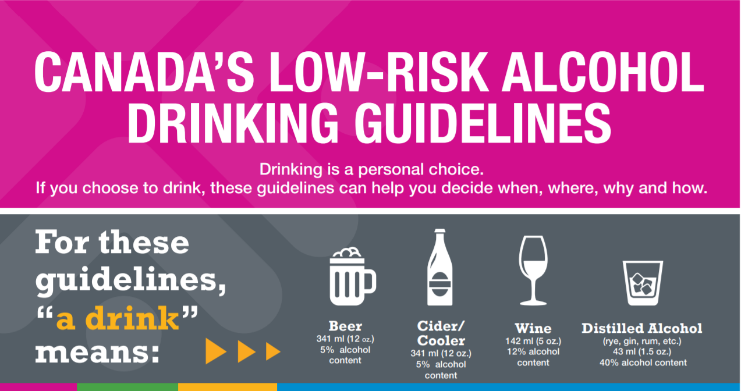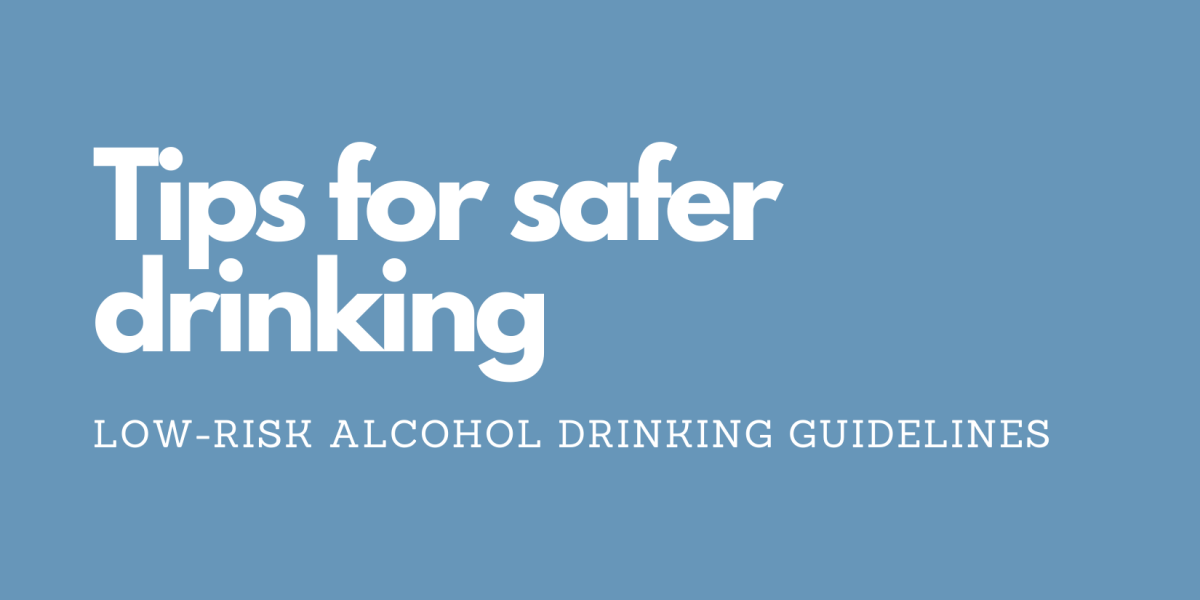Did you know that heavy drinking patterns and overall alcohol consumption is higher among people in the Thunder Bay District compared to the rest of the province? Consuming too much alcohol – on a single occasion or over time – poses a risk to overall health and wellbeing. To help reduce the risks associated with alcohol intake, people in our communities who choose to drink are encouraged to follow the Low-Risk Alcohol Drinking Guidelines (LRADGs).
The LRADGs recommend no more than:
- 10 standard drinks a week for women, with no more than 2 drinks a day most days
- 15 standard drinks a week for men, with no more than 3 drinks a day most days
Since underestimating the amount of alcohol consumed can lead to unknowingly exceeding these limits and raising health risks, it can be helpful to understand the definition of a “standard drink”. For a visual description of a standard drink, see the image below.
Drinking alcohol beyond low-risk levels can seriously affect many different areas of your health. In the short term, alcohol can put you and others at risk of injury, and it can make it more difficult to think clearly, make good decisions and participate in various tasks. Over the long term, drinking can become quite risky for the onset or worsening of chronic diseases (e.g. diabetes, cancers, high blood pressure and stroke). It can also increase the risk for problems with learning and memory, depression and anxiety, as well as work and family life. And for some people, it can lead to alcohol use disorder or alcohol addiction.
Following the LRADGs can help prevent and reduce alcohol-related harms. Although following these guidelines will not guarantee that you will have no health risks, they are a helpful tool that can be used to promote a culture of moderation around alcohol and to support a healthy lifestyle.
Using the safer drinking tips below is also recommended if you choose to drink:
- Set limits for yourself and stick to them.
- Drink slowly. Have no more than 2 standard drinks in any 3 hours.
- For every drink of alcohol, have one alcohol-free drink.
- Eat before and while you are drinking.
- Plan at least 2 non-drinking days every week to avoid developing a habit.
- Always consider your age, body weight and health problems that might suggest lower limits. Talk to your healthcare provider for more information.
- Delay your alcohol consumption if you are a teen or young adult (your brain continues to develop until your mid-twenties).
Taking other simple steps, such as planning ahead and figuring out transportation plans, getting enough sleep, and eating and hydrating well to avoid feeling the effects of alcohol faster and to prevent dehydration, can also help you drink responsibly.
Sometimes zero alcohol is the safest limit. For example, you should avoid drinking when: driving or using machinery and tools; taking medicine or other drugs that interact with alcohol; pregnant, planning to be pregnant or breastfeeding; responsible for the safety of others; and when making important decisions.
If you are looking to cut back on your alcohol consumption or if you would like more information on the ways drinking can impact your health, please speak with your family physician or nurse practitioner. You can also access the RAAM (Rapid Access to Addictions Medicine) clinic at the Marathon Family Health Team on Tuesdays or Thursday afternoons for some guidance and support.
To learn more about the Low-Risk Alcohol Drinking Guidelines, please click here.




